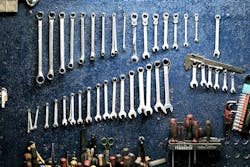Creative Destruction
Creative destruction is an economic term that has slowly been turned into a description for change and innovation: large shifts in culture, jobs and life. It’s usually good, with some exceptions, and last month we looked at a study analyzing the future of the automotive business.
The main concern of change and innovation revolves around jobs and, in a larger view, entire industries shutting down. Scary and disruptive; what happens when entire industries vanish? A quick look back at history should put us at ease a bit. Telephone operators, coal and ice deliverymen, video store employees, travel agents and taxi drivers are just some that come to mind.
Each change brings calls for protection from change through government intervention. This is nothing new; just look at this satire from France in the 1800s. This was a plea to government to protect the candle industry from unfair competition. (It can be found in its entirety at: http://bastiat.org/en)
“We are suffering from the ruinous competition of a rival who apparently works under conditions so far superior to our own for the production of light that he is flooding the domestic market with it at an incredibly low price; for the moment he appears, our sales cease, all the consumers turn to him and a branch of French industry whose ramifications are innumerable is all at once reduced to complete stagnation. This rival, which is none other than the sun, is waging war on us so mercilessly…
“…We ask you to be so good as to pass a law requiring the closing of all windows, dormers, skylights, inside and outside shutters, curtains, casements, bull’s-eyes, deadlights and blinds — in short, all openings, holes, chinks and fissures through which the light of the sun is wont to enter houses, to the detriment of the fair industries with which, we are proud to say, we have endowed the country, a country that cannot, without betraying ingratitude, abandon us today to so unequal a combat.”
Such calls recently were heard from the music industry during the Napster era and in the taxi cab industry now. Look now on the web where robots and computer innovation are profiled; we read about driverless cars and warehouse operations using all robot help (Amazon). It can be scary to many. It’s scary to me; I like what I do. I struggle imagining what life will look like soon. A quick look back at my life shows lightning quick advances in technology. Two hundred years ago, most — some say over 70 percent — of employment was in agriculture, now it is around 3 percent. It’s easy to see the laid-off people; it’s hard to see the new jobs and freedom that these shifts create, at least right away. Accountants, pharmacists, realtors, doctors, astronauts and even sex workers are starting to be replaced with robots and/or computers.
The good news is, if you are willing to take risks and innovate, too, you can grow with the changes (apologies to REO Speedwagon). How many of you once had video stores? How many of you are looking at marijuana distribution?
You don’t have to wait for the big moves, you can look in your shops to innovate now. New technology, products and services can make you more money now. New ways to build your customer base exist; are you changing your marketing to keep up? When did you last see your yellow pages sales rep?
I am digging the new technology improvements from the OEs — they are the gift that keeps on giving to both of us. I’d love to hear your thoughts on the subject. Call me, text me, write me a snail mail. What does your crystal ball see in our future?
